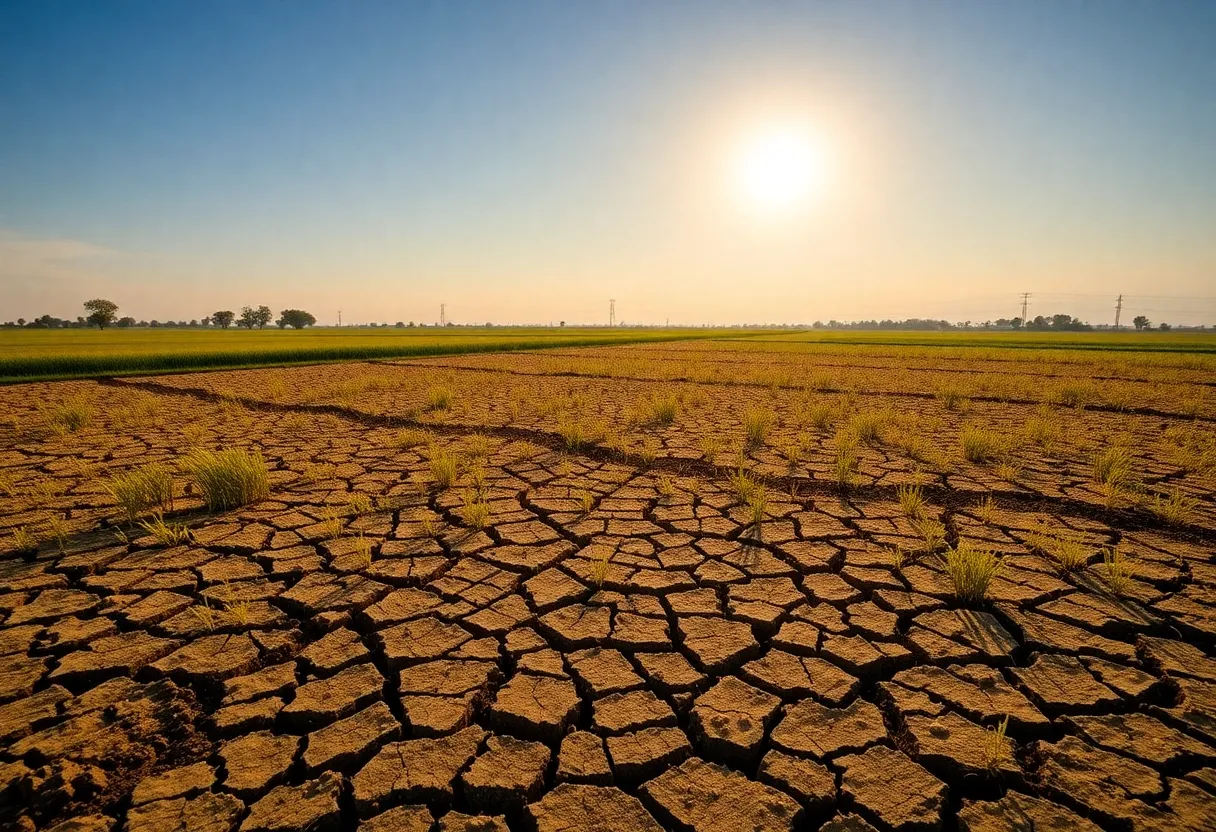California, October 23, 2025
News Summary
California’s rice industry is grappling with severe drought conditions that are impacting water availability for farming. For the third consecutive year, approximately 300,000 acres are expected to remain unharvested, with some farmers, like Kurt Richter, cutting their planting areas significantly. In contrast, certain counties have had better water access allowing for more rice cultivation. The industry, which contributes $5 billion and supports around 25,000 jobs, faces a critical need for innovative water management and collaboration among growers to thrive amidst these challenges.
California
California’s rice industry is facing significant challenges due to ongoing drought conditions that threaten water availability for rice farming. For the third consecutive year, drought has severely impacted the state, with approximately 300,000 acres of rice fields expected to remain unharvested this year. Many rice farmers, like Kurt Richter in Colusa, report drastically reduced planting areas—from a normal 5,000 acres down to just 1,300 acres—due to water shortages. In contrast, some farmers in Butte County have managed to plant more rice than the previous year thanks to enough water supply.
The California rice industry, which generates an estimated $5 billion in revenue and provides approximately 25,000 jobs, is primarily concentrated in the Sacramento Valley, known for its highly productive agricultural output. Rice farming in California emphasizes water management, focusing on timing, efficiency, and sustainability strategies to cope with the current drought situation.
In response to dwindling water resources, the Glenn-Colusa Irrigation District is prioritizing infrastructure updates to ensure effective water allocation and to engage in river restoration projects. The California Rice Commission (CRC) plays a critical role in advocating for rice growers and millers, working on issues related to pesticide regulation, wildlife habitat conservation, and public education about the industry’s importance.
Innovative programs are emerging to mitigate the effects of drought and enhance ecological balance. The rice fields serve as surrogate wetlands, supporting various wildlife species, particularly migratory birds connected to the Pacific Flyway. The CRC also promotes initiatives, such as the “Fish Food” program, which aims to support salmon populations by utilizing zooplankton from rice fields, thus improving food availability for juvenile salmon.
This year’s drought-induced anxiety over future water availability for rice farming has led to a reliance on crop insurance for some financial relief. However, the long-term sustainability of the industry remains a significant concern as drought conditions persist.
As rice growers navigate these challenges, there is a growing necessity for collaboration among them to ensure the future of California’s rice industry. The blend of tradition, hard work, and innovation has become crucial as they strive to adapt their practices in a rapidly changing climate.
Key Facts about California’s Rice Industry
- California agriculture is a multi-billion-dollar industry, generating around $50 billion.
- The rice industry generates an estimated $5 billion in revenue.
- Approximately 25,000 jobs are provided by the rice industry in California.
- Drought conditions have led to 300,000 acres of rice fields being unharvested this year.
- Farmers like Kurt Richter have planted only 1,300 acres of rice compared to their normal 5,000 acres.
- The California Rice Commission advocates for rice growers and millers addressing pesticide regulation and wildlife habitat.
- California’s rice fields also serve as surrogate wetlands, supporting the ecosystem.
FAQ
What challenges is the California rice industry currently facing?
California’s rice industry is facing significant challenges due to ongoing drought conditions that threaten water availability for rice farming.
How much revenue does the rice industry generate in California?
The rice industry generates an estimated $5 billion in revenue in California.
What percentage of rice fields are expected to remain unharvested this year due to drought?
Approximately 300,000 acres of rice fields are expected to remain unharvested this year due to drought conditions.
How many jobs does the rice industry provide in California?
The rice industry provides approximately 25,000 jobs in California.
What role does the California Rice Commission play?
The California Rice Commission advocates for rice growers and millers, addressing pesticide regulation and wildlife habitat.
Deeper Dive: News & Info About This Topic
- USA Rice Daily
- KCRA
- Sacramento Bee
- San Francisco Chronicle
- Davis Enterprise
- Wikipedia: Rice
- Google Search: California rice industry
- Google Scholar: California rice farming
- Encyclopedia Britannica: Rice
- Google News: California rice

Author: STAFF HERE COSTA MESA WRITER
The COSTA MESA STAFF WRITER represents the experienced team at HERECostaMesa.com, your go-to source for actionable local news and information in Costa Mesa, Orange County, and beyond. Specializing in "news you can use," we cover essential topics like product reviews for personal and business needs, local business directories, politics, real estate trends, neighborhood insights, and state news affecting the area—with deep expertise drawn from years of dedicated reporting and strong community input, including local press releases and business updates. We deliver top reporting on high-value events such as the OC Fair, Concerts in the Park, and Fish Fry. Our coverage extends to key organizations like the Costa Mesa Chamber of Commerce and Boys & Girls Clubs of Central Orange Coast, plus leading businesses in retail, fashion, and technology that power the local economy such as Vans, Experian, and South Coast Plaza. As part of the broader HERE network, including HEREAnaheim.com, HEREBeverlyHills.com, HERECoronado.com, HEREHollywood.com, HEREHuntingtonBeach.com, HERELongBeach.com, HERELosAngeles.com, HEREMissionViejo.com, HERESanDiego.com, and HERESantaAna.com, we provide comprehensive, credible insights into California's dynamic landscape.





